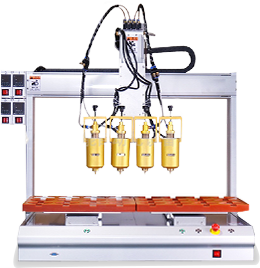

The metal cylindrical mechanical parts are specially designed for medical equipment. They are made of high-quality materials such as medical-grade stainless steel and titanium alloy, and are formed by precision CNC processing. One end of the part is equipped with a toothed knob for precise adjustment; the other end is a smooth cylinder that adapts to a variety of connection requirements. With its high strength, high precision and good biocompatibility, it is widely used in surgical instruments, medical imaging equipment, etc., providing reliable support for the stable operation and precise operation of medical equipment.
Excellent performance materials: 316L medical stainless steel, titanium alloy and other materials are used. 316L stainless steel contains molybdenum and has strong corrosion resistance. It can resist the erosion of disinfectants and body fluids in medical environments. Titanium alloy is both light and high-strength, and is non-magnetic. It is suitable for medical equipment that is sensitive to magnetic fields, ensuring long-term and stable use of parts.
High-precision manufacturing: Using advanced five-axis linkage CNC machining technology, the part size accuracy is controlled at ±0.005mm, and the surface roughness Ra≤0.4μm. The toothed knob has precise tooth shape and stable bite, which can achieve precise parameter adjustment; the smooth cylindrical end cooperates closely with other components to ensure error-free operation of the equipment.
Biosafety and reliability: Strictly follow the ISO 10993 biosafety standard, the material is non-toxic and harmless, and there is no adverse reaction when in contact with human tissue. It can be safely used in medical equipment that directly contacts patients, such as the joint shaft of rehabilitation equipment and the transmission parts of surgical instruments.
Multifunctional design: The toothed knob is convenient for medical staff to operate manually and quickly adjust equipment parameters; the smooth cylindrical end can be used as a transmission shaft to transmit power, or as a positioning shaft to achieve precise installation of components, meeting the diverse functional requirements of medical equipment.
Test items | Testing standards | Significance of testing |
Material composition | Comply with medical metal standards | Ensure biological safety |
Tensile strength | ≥600MPa | Guarantee structural strength |
Dimensional accuracy | ±0.005mm | Achieve precise matching |
Surface roughness | Ra≤0.4μm | Reduce the risk of bacterial attachment |
Materials and processes: During the production process, the metal materials are first forged to optimize the internal structure and improve the mechanical properties. Then, they are finely processed by CNC lathes and grinders to create a high-precision appearance structure. Finally, surface treatment processes such as electrolytic polishing and passivation are used to further enhance the corrosion resistance and surface finish of the parts and reduce the possibility of bacterial growth.
Specifications and customization: A variety of specifications are available with diameters of 5mm-50mm and lengths of 10mm-200mm to adapt to the installation space and functional requirements of different medical equipment. At the same time, personalized customization services are supported, and the size, tooth pattern type, surface treatment method, etc. can be adjusted according to the drawings or specific requirements provided by the customer to meet the design and manufacturing needs of special medical equipment.
Application scenarios: In the field of surgical instruments, it can be used as the adjustment axis of the surgical blade to achieve fine control of surgical operations; in endoscope equipment, it acts as a rotating connector to help doctors flexibly adjust the viewing angle. In terms of medical imaging equipment, it is used inside CT machines and MRI machines as a transmission positioning axis to ensure the precise operation of the equipment. In addition, on rehabilitation training equipment, it serves as a joint movement adjustment component to help patients conduct safe and effective rehabilitation training.
 Headquarters tel.
Headquarters tel. E-mail.
E-mail.